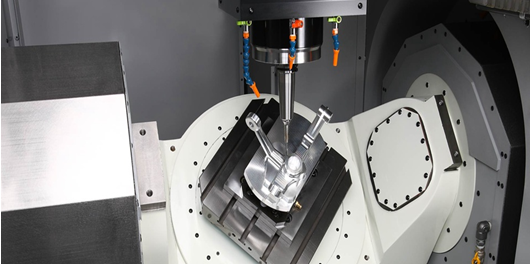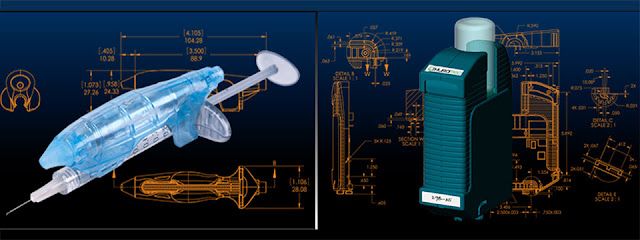CNC VS SLA and SLS printing
CNC machining and 3D-printing (SLA or SLS) are the main methods of
producing Prototypes and commercial products when the weight
of the initial stock and the final product are different. The part creation
principle, however, completely opposite. It is important to understand the
differences between them in order to be able to choose the required method to
produce your own sla prototype correctly.
CNC Machining
and its benefits
CNC machining
is the oldest of the three methods and the only subtractive one. It means that
the mass of the stock gets lower as its condition gets closer to the final
part. The material is removed from the stock material by using different
cutting tools that move according to a CNC program. The most widespread machining centers feature
turning or milling as the main machining methods and if the precision of the
part is high, grinding and polishing will get you the desired results in
tolerance and surface finish.
CNC machining is the most precise method when
compared to the other three because cutting offers increased rigidity, lack of
thermal distortion and the initial material of the stock usually has a higher
quality when compared to the Additive Manufacturing. Machining has its
disadvantages too. Firstly, it is the longest method when comparing lead time
because of the need to write a CNC program, to install fixtures and to set up
the tools, however, once you have done all of that, CNC machining as remarkable
repeatability and the process itself is usually faster than 3D-printing.
It also requires the highest qualification of the worker as he has to understand the technology to choose the cutting parameters, tool trajectory and the coolant. CNC machining has some restrictions compared to the Additive Manufacturing, especially in terms of inner surfaces because the cutting tool is often too big or can’t get into a complex bent inner hole.
It also requires the highest qualification of the worker as he has to understand the technology to choose the cutting parameters, tool trajectory and the coolant. CNC machining has some restrictions compared to the Additive Manufacturing, especially in terms of inner surfaces because the cutting tool is often too big or can’t get into a complex bent inner hole.
To summarize, CNC machining
is more viable for producing a moderate amount of identical parts than
prototyping, however, in some cases, when precision is concerned, you just
can’t do without it.
SLA printing and
its benefits
Now, this method is
different from the first one in every way. The weight of the initial stock is
zero, but as the part gets closer to its finished stage, its mass grows. That
is achieved by sintering the material layer-by-layer. In case of SLA printing,
the material can only be plastic (which is its main restriction and
disadvantage, by the way) and it is contained within a reservoir in a liquid
state.
Above the surface of the pool of plastic is a laser or a UV beam. The radiation of the ray hardens the surface of the pool and is then submerged. Then the process is repeated until the whole part is obtained. It is important to note that the surface finish of the part is not worse than if you manufacture it using machining. The tolerances are somewhat worse though (mainly due to a staircase effect, i.e. every layer has its own width, it is not zero, that is why slanting surfaces are comprised of those steps and are rougher).
Lead time in SLA printing is the shortest of the three because you do not need any fixtures or tools and you don’t need to write the CNC program. The printer does it for you. And the manufacturing opportunities are limitless because you can make almost any type of complex structure that is impossible to be worked by machining. That is why SLA-printing is great for making smooth plastic prototypes but it can’t do much more than that and CNC machining can still achieve a better surface and precision if you use grinding in the end.
Above the surface of the pool of plastic is a laser or a UV beam. The radiation of the ray hardens the surface of the pool and is then submerged. Then the process is repeated until the whole part is obtained. It is important to note that the surface finish of the part is not worse than if you manufacture it using machining. The tolerances are somewhat worse though (mainly due to a staircase effect, i.e. every layer has its own width, it is not zero, that is why slanting surfaces are comprised of those steps and are rougher).
Lead time in SLA printing is the shortest of the three because you do not need any fixtures or tools and you don’t need to write the CNC program. The printer does it for you. And the manufacturing opportunities are limitless because you can make almost any type of complex structure that is impossible to be worked by machining. That is why SLA-printing is great for making smooth plastic prototypes but it can’t do much more than that and CNC machining can still achieve a better surface and precision if you use grinding in the end.
SLS printing and
its benefits
This type of prototype
manufacturing is closer to SLA printing as it is an additive method too. Its
main difference is the material. SLS printing deals with metal. The main
principle here is spreading the metal powder in a thin layer and sintering it
with a laser. Due to the fact that powder grain is very small, you get a high
quality sintered part and most of the laser trajectories are software produced.
However, metal sintering is much more complex than plastic melting and 3D-printing software is not yet at the level required to process all the issues that occur when sintering metal powder. That is why lead time in SLS-printing is higher than in SLA and also, due to the innovativeness of the process and the lack of full-fledged research, the number of defects is considerable.
The final surface finish of the parts is also lower, up to 2-4 times that of CNC machined parts. Despite that, SLS printing is still much easier and faster when we talk about making prototypes. You still don’t require any tools or fixtures and the amount of waste is much lower (up to 80%) compared to CNC machining.
However, metal sintering is much more complex than plastic melting and 3D-printing software is not yet at the level required to process all the issues that occur when sintering metal powder. That is why lead time in SLS-printing is higher than in SLA and also, due to the innovativeness of the process and the lack of full-fledged research, the number of defects is considerable.
The final surface finish of the parts is also lower, up to 2-4 times that of CNC machined parts. Despite that, SLS printing is still much easier and faster when we talk about making prototypes. You still don’t require any tools or fixtures and the amount of waste is much lower (up to 80%) compared to CNC machining.
Another advantage of 3D-priting is the ability to create complex shapes,
lattice and cellular structures. You can redesign the product itself to make it
lighter, hollow with inner supports and still as strong as if it was solid.
Another advantage of 3D-printing with metal compared to CNC machining is the
ability to produce composite alloys in situ or so-called metamaterials. The
first ones are obtained by sintering together different powders and the second
ones can be made by sintering different layers. Both of material types enable
the creation of parts, whose material properties differ with dimensions.
SLS-printing is a process that may be able to define the product instead of
being defined by it and it may be its main advantage.
Conclusion
Having looked at the methods,
it is now possible to assume their respective areas of use. CNC machining is
viable when a number of parts is needed or when very precise tolerances or fine
surface finish are necessary. Now, SLA-printing is ideal for making plastic
prototypes of great quality and SLS printing is great for creating metal
prototypes with innovative design.






Comments
Post a Comment